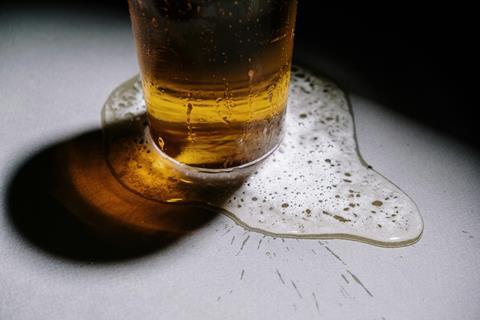Researchers at Tufts University School of Medicine and Tufts Graduate School of Biomedical Sciences have found a surprising connection between a fungus associated with alcohol use disorder and the brain’s dopamine reward pathway.

Published October 16 in the journal mBio, the study describes, in mice, how an overgrowth of Candida albicans—a fungus that naturally resides in the human gut—increases levels of inflammatory molecules called PGE2 that can cross the blood-brain barrier and affect the desire for alcohol.
READ MORE: Alcohol opens the floodgates for bad bacteria
READ MORE: Youth binge drinkers show alterations in the gut microbiome, new study finds
PGE2, short for prostaglandin E2, is a multifunctional molecule involved in mediating inflammatory responses, reducing stomach acid, or triggering fevers. As C. albicans blooms in the gut—which is associated with antibiotic use, poor diet, or alcohol consumption—it both produces and stimulates the production of PGE2. The study suggests that as the molecules circulate, they enter the forebrain and alter dopamine signaling in the dorsal striatum, a region involved in reward processing and habit formation.
While the researchers hypothesized that mice would find the taste of alcohol more rewarding and thus drink more when colonized with C. albicans, the results showed the opposite. As PGE2 levels rose along with fungal populations, the mice began to avoid the beverage. When the investigators blocked PGE2 receptor molecules, the behavior was reversed, and the mice would drink alcohol again.
Unexpected outcome
“Our study shows how science works—our initial ideas were very wrong,” said first author Andrew Day, who conducted the study while a Ph.D. student in the Molecular Microbiology program at the Graduate School of Biomedical Sciences. “This could be explained by differences in how mice respond to C. albicans compared to humans, differences in fungal strains, or we might be seeing a small snapshot of the entire story.”
The researchers also discovered that mice with C. albicans overgrowth were more sensitive to alcohol’s effects on motor coordination. This effect could also be reversed by blocking PGE2 activity.
“Our bodies are wired so that our behavior responds to gut microbiota, and this study highlights that fungi are important components of the gut-brain axis,” said senior author Carol Kumamoto, a professor of molecular biology and microbiology at the School of Medicine. “We think fungal colonization levels in individuals with alcohol use disorder could be impacting host alcohol consumption by influencing interest in drinking—whether it’s affecting how rewarding a drink may be is more of an interpretation.”
Alcohol use disorder
Alcohol use disorder affects over 5% of adults worldwide and is defined by an inability to control or stop alcohol consumption despite negative consequences. Traditional treatments—including behavioral therapy, support groups, medications, and maintaining abstinence—are only moderately effective, with some adults experiencing high relapse rates, creating a need for alternative approaches.
Future studies into the impact of fungi and PGE2 on alcohol use disorder could reveal new contributors to its progression. Recent clinical trials have investigated fecal microbiota transplants for the disorder, with preliminary studies showing promising effects on alcohol preference and consumption.
Additional authors are Jamie Maguire, professor at the School of Medicine, and research technician Emma Hayes of Tufts University School of Medicine; Katrina Blandino, a Ph.D. student at the Graduate School of Biomedical Sciences; Alyssa DiLeo, a graduate of the Graduate School of Biomedical Sciences; and Jeyra Perez-Lozada, formerly of Tufts University School of Medicine.







No comments yet